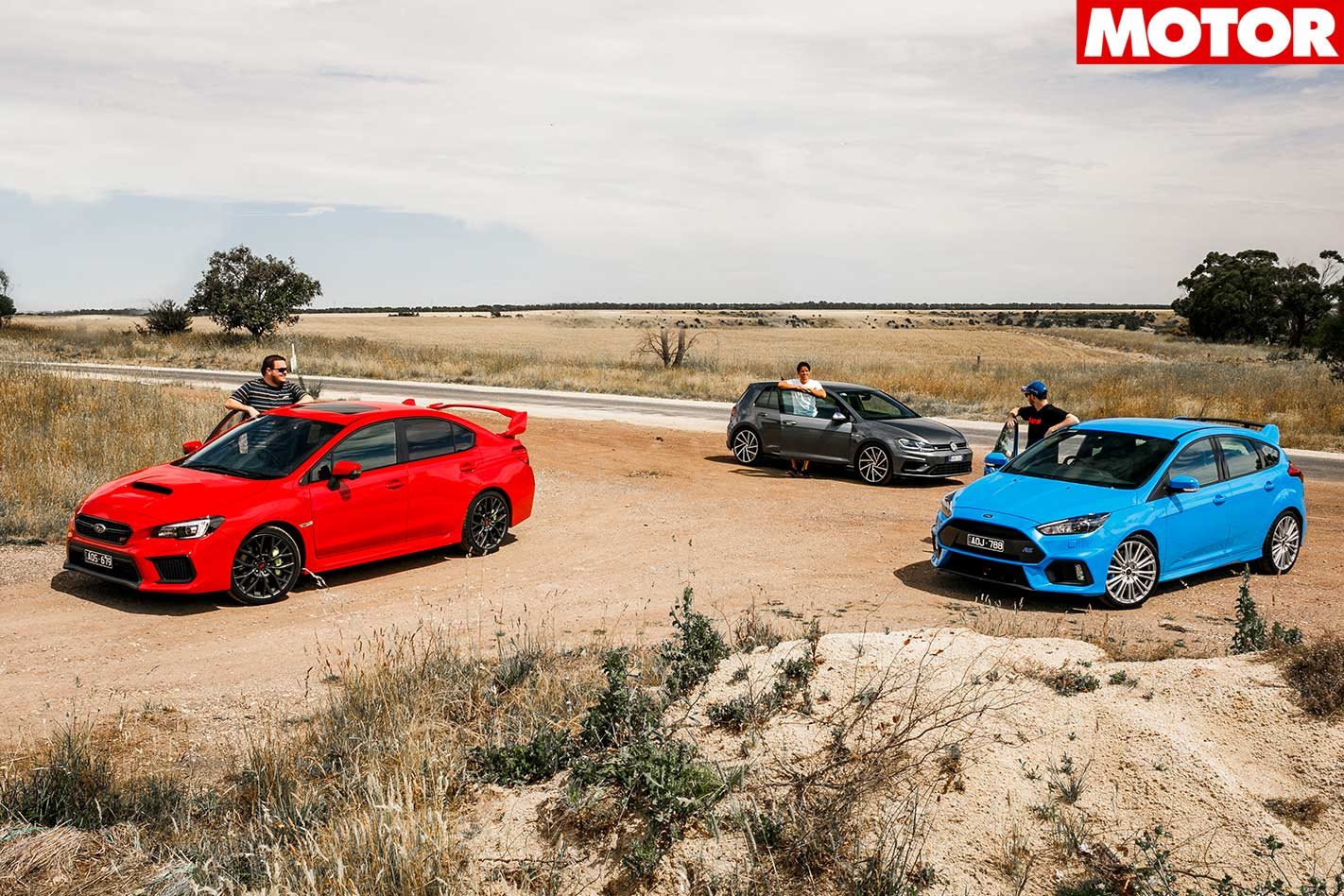Humans are always seeking thrills in unlikely places.
Whether we’re being crushed in a mosh pit, flung out of an aircraft, plunging over a waterfall or simply sat in a dark room having the wits scared out of us while munching popcorn, as long as that heart rate is increased we’re happy.
The Ford Focus, Subaru Impreza and Volkswagen Golf are equally weird places to search for a buzz. In standard form, their engines prioritise economy over power, their bodyshells swallow groceries better than they distribute weight and their prices are too small to justify serious engineering.
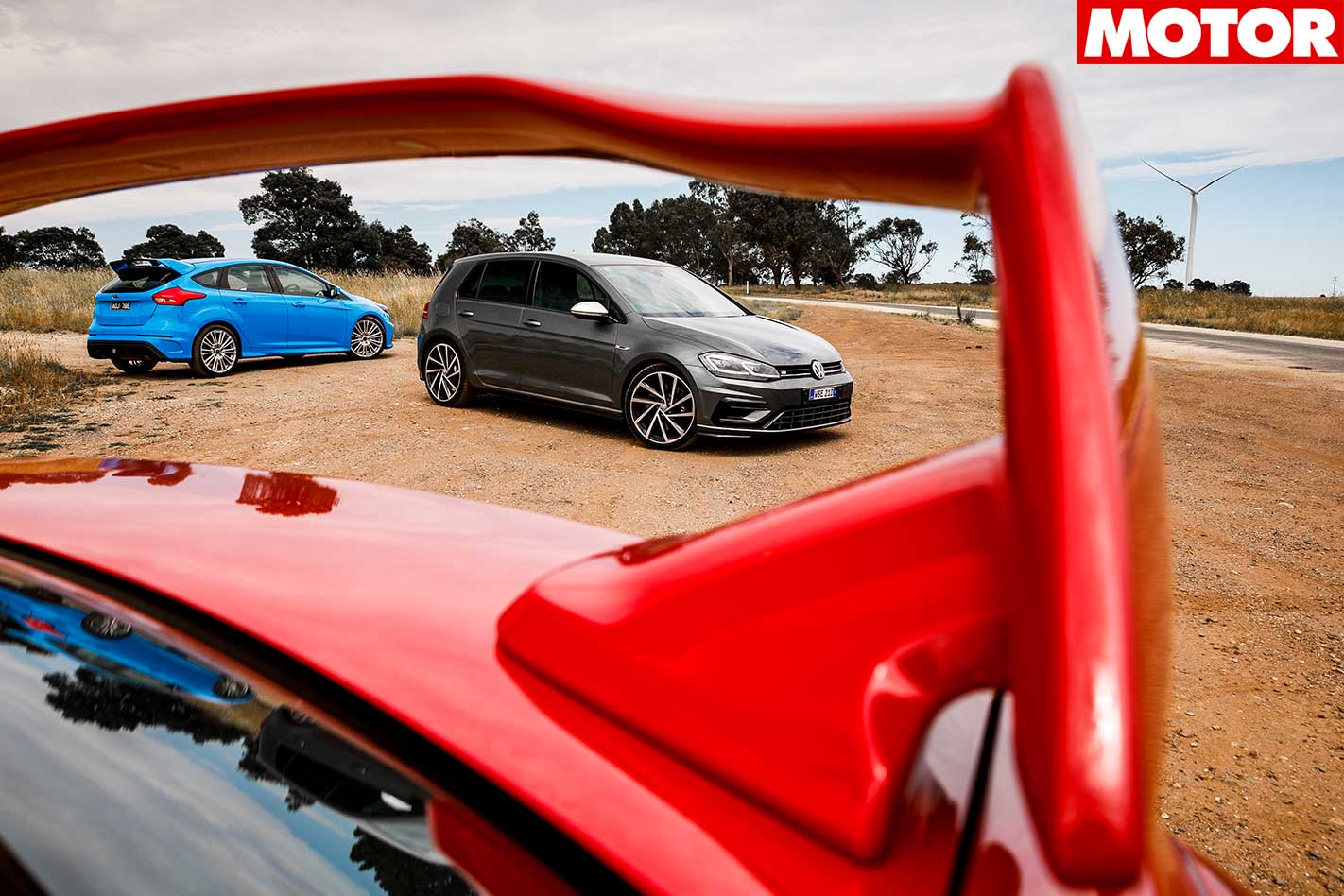
Virtually nothing could drop a well-driven STI on a tricky road. The Subie wasn’t the first turbo all-wheel drive weapon, but its success forced others to forge their own.
Ford’s third-generation Focus RS switched to four driven wheels with devastating effect, rolling into Performance Car of Year 2017 and blowing away three supercars to snatch third place. Before that, it beat the Volkswagen Golf GTI 40 Years and Mercedes-AMG A45 in a comparison where neither could match the RS’s involvement and handling genius.
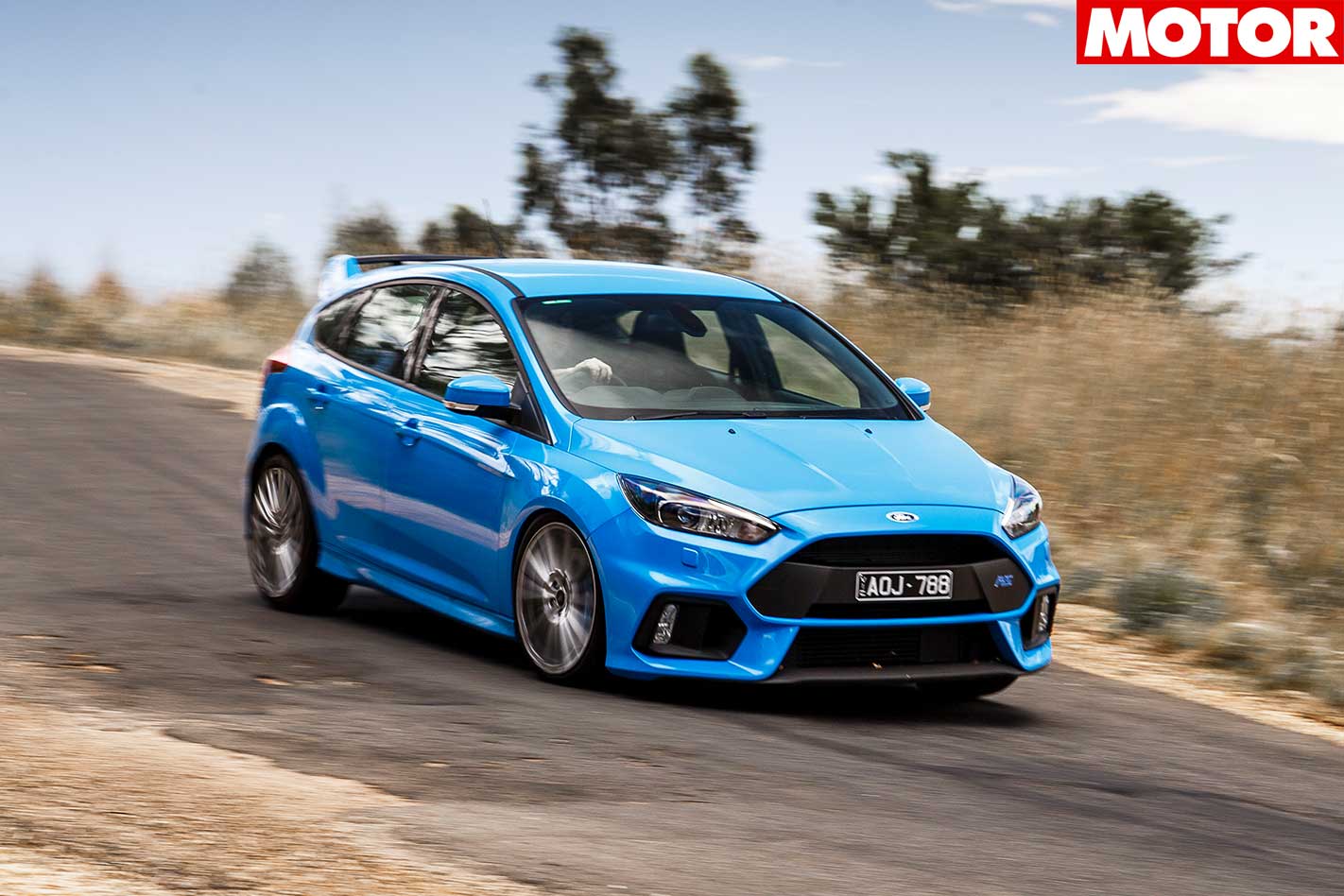
This inflates the LE’s price to $56,990, but because Ford didn’t have one available, we’ve snaffled the standard $50,990 RS with the LE’s Michelin Sport Cup 2 tyres instead. It arrives in Nitrous Blue, the only colour now available.
For the rematch the limited-edition Golf GTI 40 Years has tagged in its big brother, the R, which transfers the clutch-locking Haldex differential from the front axle to the propshaft for a better chance at slaying the RS.
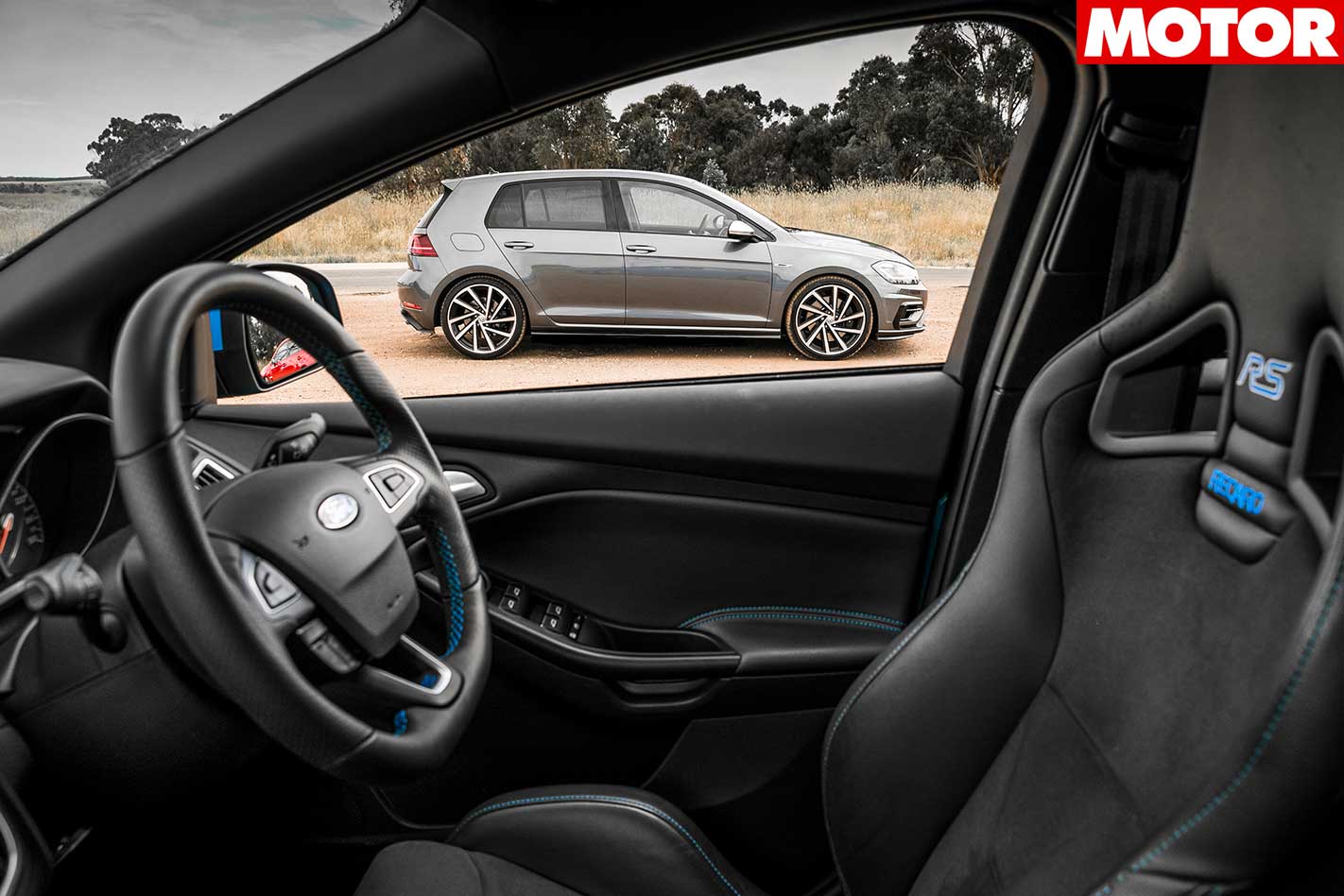
Speaking of previous BFYB champs, the WRX STI used to be virtually purpose-built for the award, but the receipe’s been the same for a while now. Subaru dropped the Impreza nameplate, allowing the base car to move on a generation. Meanwhile, the standard WRX has adopted the company’s new FA-series engine with a more logical low-mount turbocharger.
The largest revision made to the STI was in 2014 when Subaru flipped the location of the clutch and front differential, stretching the wheelbase 25mm. The budget clearly wasn’t huge for the 2018 version, but worthwhile changes have still been made.
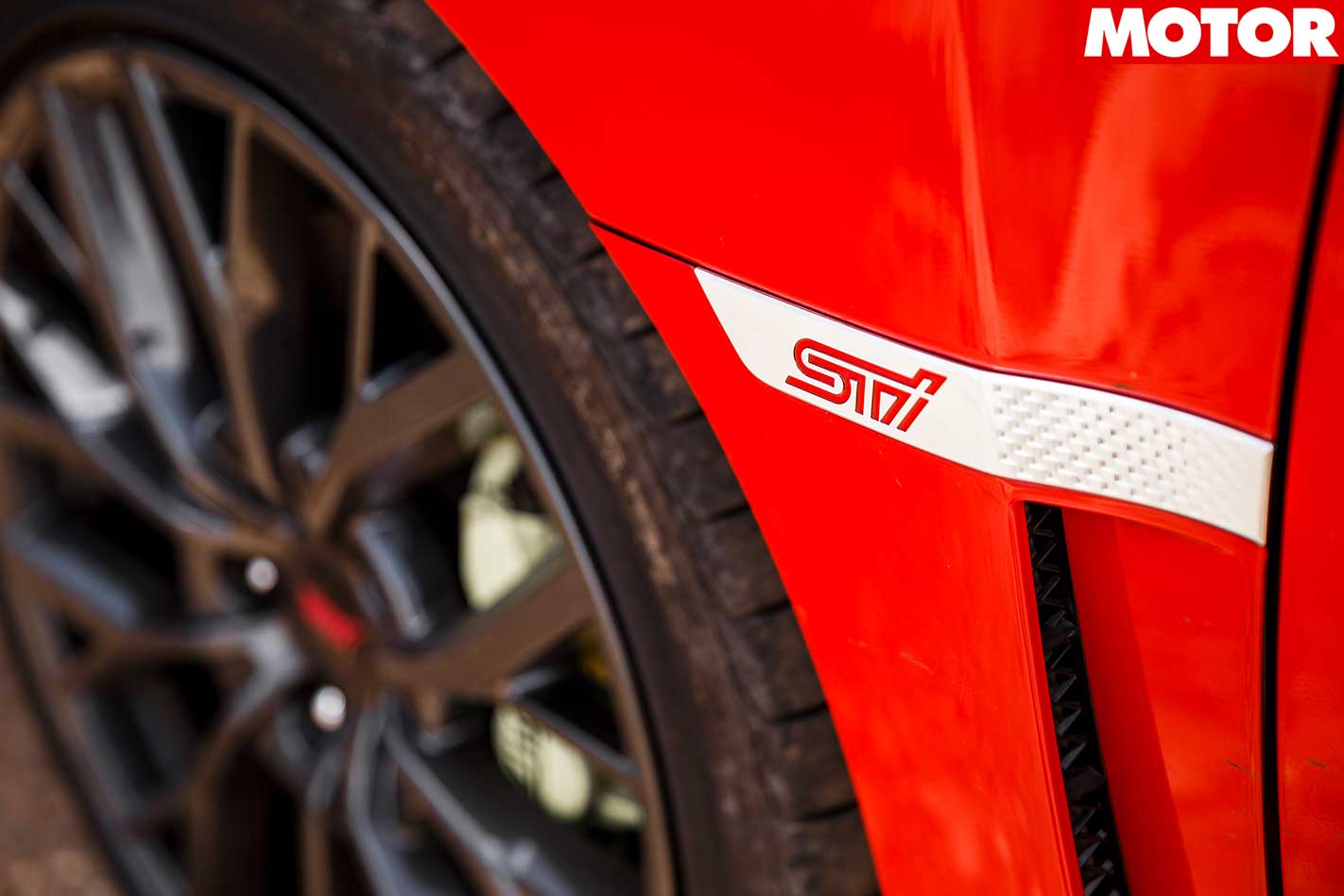
Under the bonnet is the same 2.5-litre boxer four that’s propelled the car’s last three generations. It’s far from the latest and greatest – the port-injected unit offers the same 221kW and 407Nm it did a decade ago – but still splits the other two on the spec sheet.
The Golf R’s revised EA888 inline-four features unique pistons, dual-injection and variable valve lift and has spiked 7kW. This takes European engines to 228kW/400Nm, but our crappy fuel and searing temps smother the 2.0-litre’s full potential, capping numbers at 213kW and 380Nm.
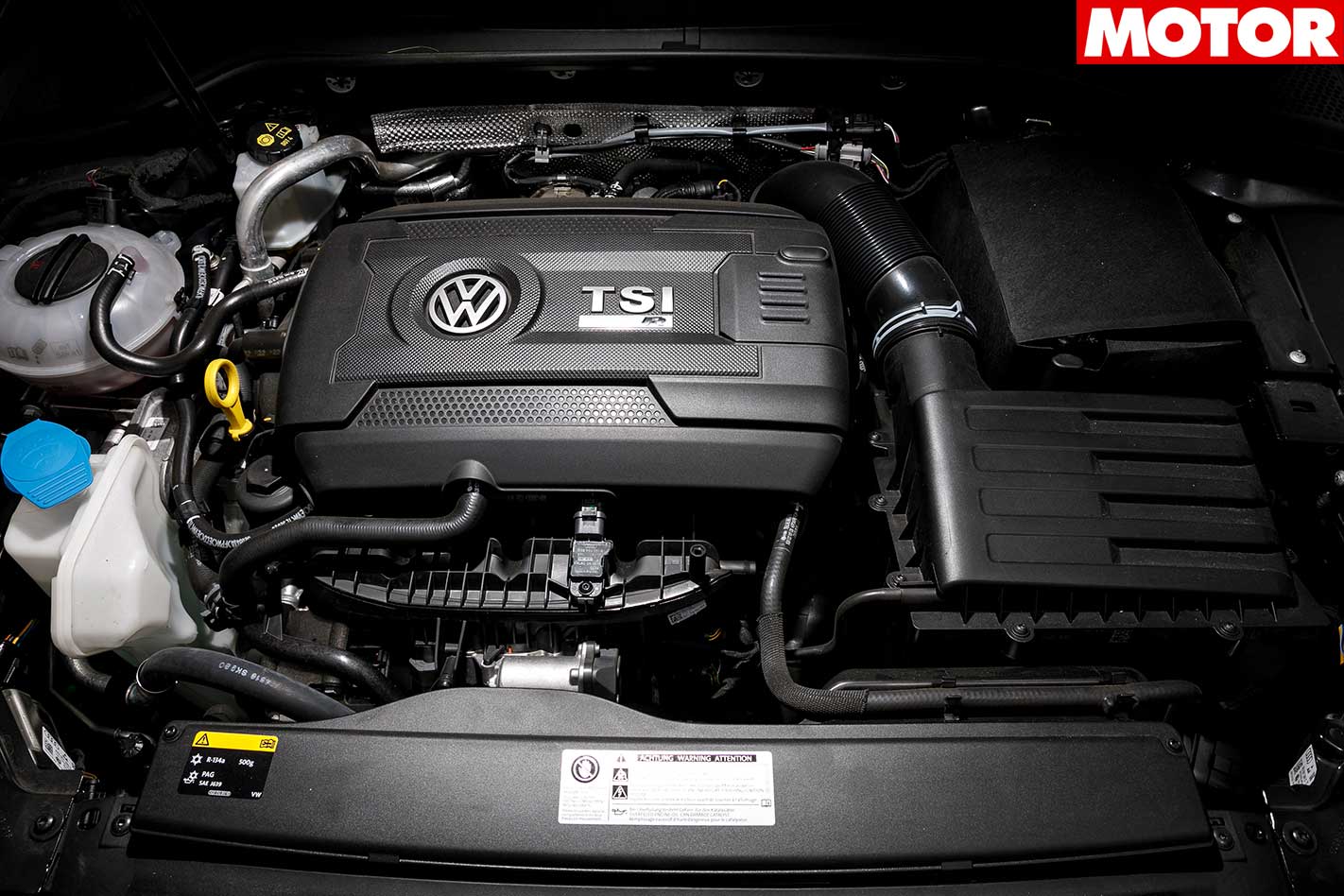
The Focus doesn’t shout about this advantage, at least from the inside. The starter button treats bystanders with a raspy growl that carries a hint of WRC car, but it’s a bit lost in the cabin.
There’s no such problem in the Subaru. It settles into a deep, bassy throb loud enough to charm the fussiest boxer fan, inside or out, though early-risers who want to retain an invite to their neighbour’s BBQ should look to the Golf. The gruff note played by its quad tips isn’t meek or lacking intent, just more sensible in this company.
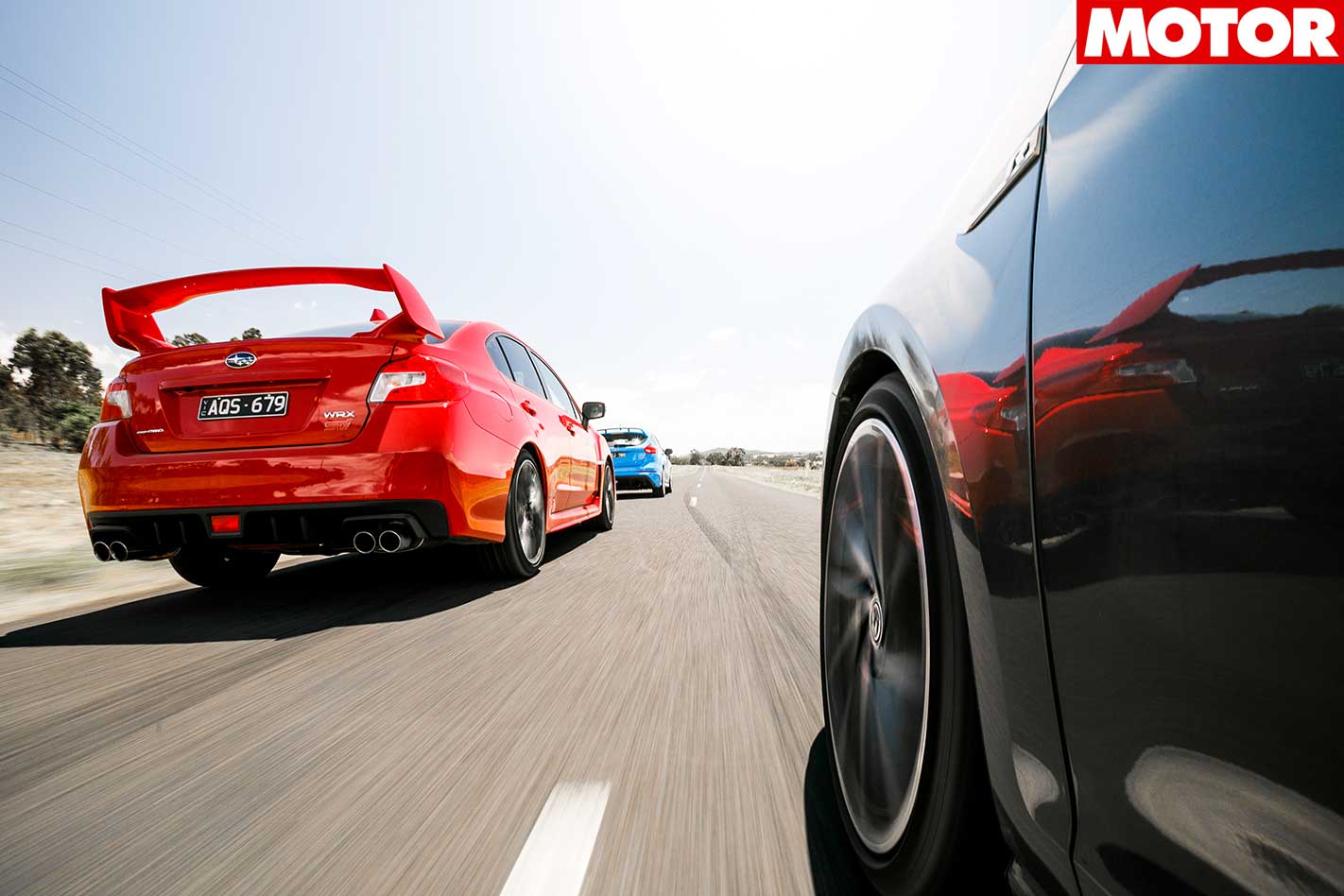
Launch control doesn’t lurk in these sub-menus, though. Because our Golf R packs a six-speed manual to match its rivals, your feet are in charge. Select Race mode, disable ESP, and pin the clutch to select first gear. Half-throttle has the needle hovering about 3750rpm, where you should briskly drop the clutch.
Volkswagen’s new seven-speed dual-clutch would fling the R from rest with more fluency. But once engine and wheel speeds match, you surf a creamy, linear powerband that stretches from 3000rpm to redline. The 2.0-litre unit loves to rev more than its undersquare dimensions hint, even though it stops at 6750rpm – short of the indicated cut-out on its fancy new 8.0-inch digital cluster.
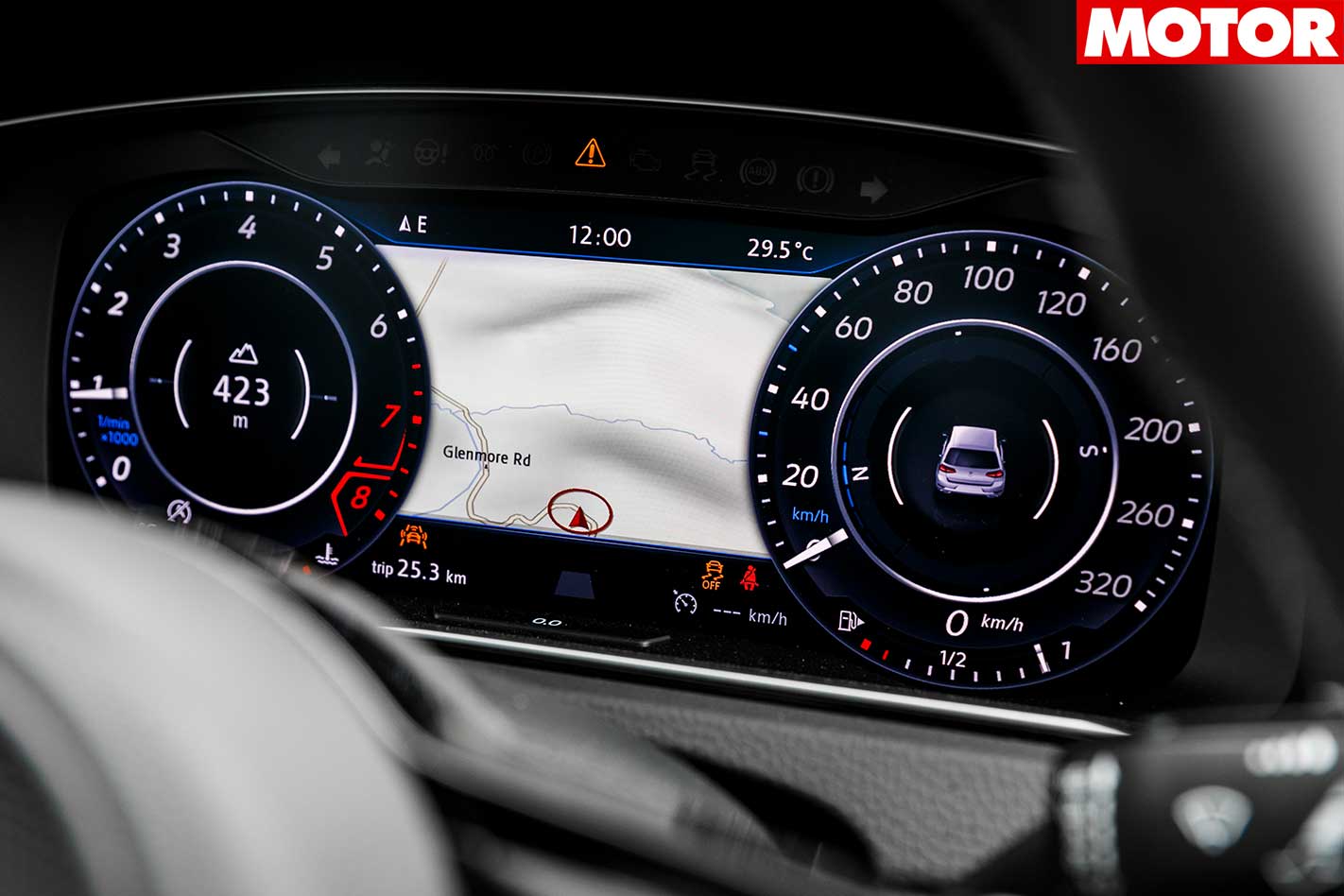
The STI requires brutality, though; it needs as many revs as possible to overcome three limited-slip differentials, so stepping off the clutch is like plunging the lever connected to a dynamite stack. Try to launch at anything less than redline and the Subaru hops, bogs, and falls out of its tightly-packed powerband.
Thank the engine’s high boost pressure and low compression ratio for its slug of thrust, which swells at about 3000rpm. Once the turbo wakes up it’s like the car’s chained to a passing bullet train and the slack’s suddenly run out. The thrust fades near 6000rpm, but the boxer’s oversquare dimensions spin the crank so fast it’s easy to reach the 6700rpm redline.
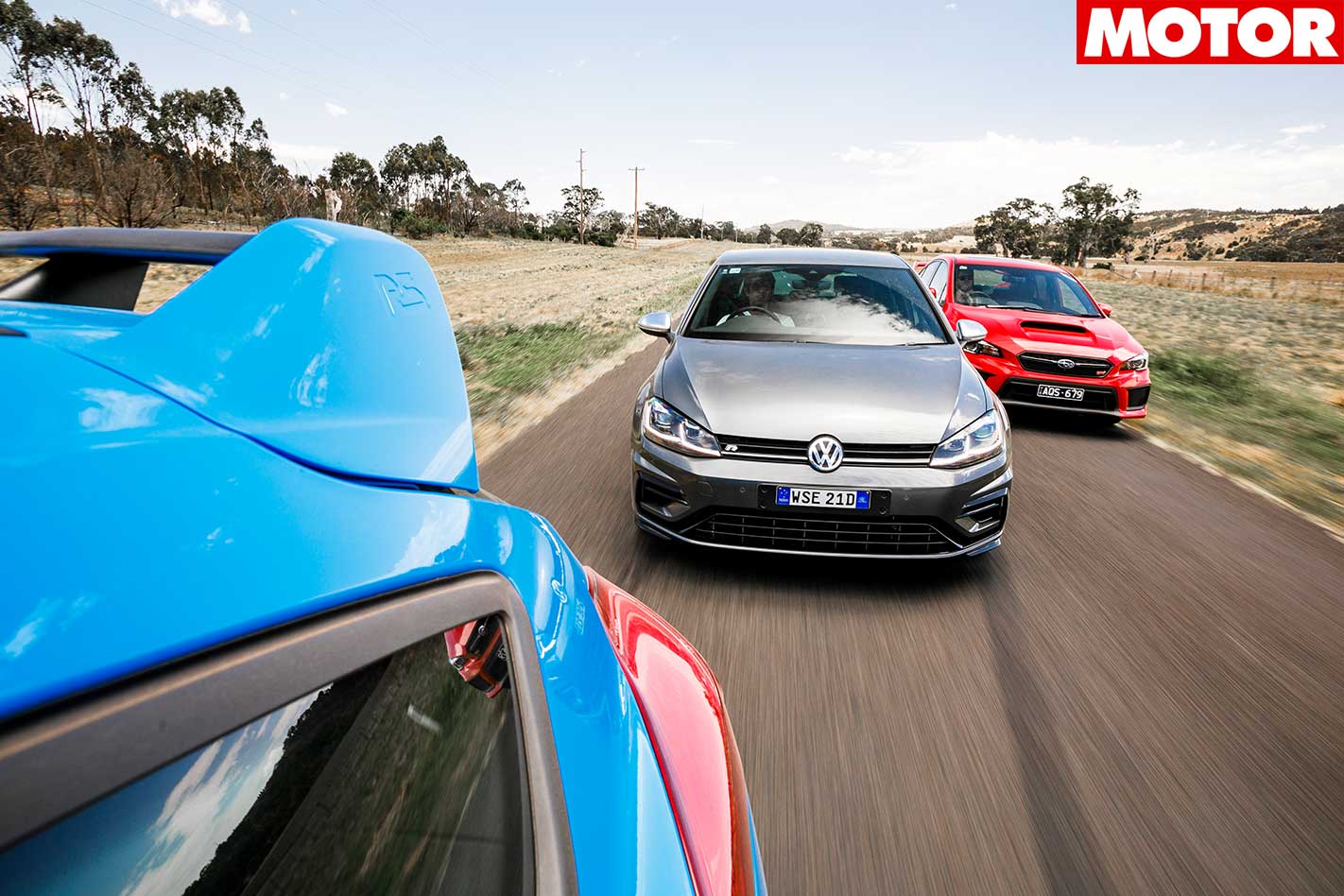
Drop the clutch and the revs land nicely in a torque crest, which reels you into the engine’s mid-range. It’s here the Focus RS channels its predecessor’s five-banger vibe, its 2.3-litre engine feeling half-a-litre larger than it is. The engine bay’s sound-pipe injects a hint of warble into the cabin, too, for those missing the old soundtrack.
Second gear will kiss 100km/h, but the Focus engine’s drawcard is its 204Nm-per-litre specific output (on overboost), which towers above the Golf’s 190Nm per litre, and the Subaru’s 163Nm. Attempting to channel 440Nm through the front boots in the last RS is undoubtedly why Ford summoned AWD.

Super-quick steering helps. The electrically-assisted rack might feel slightly elastic and simulated, but its solid weight and accuracy are reassuring, especially after blasting the Subaru across bumpy surfaces. It’s like different engineering teams worked on the STI’s front and rear suspension and never shared notes.
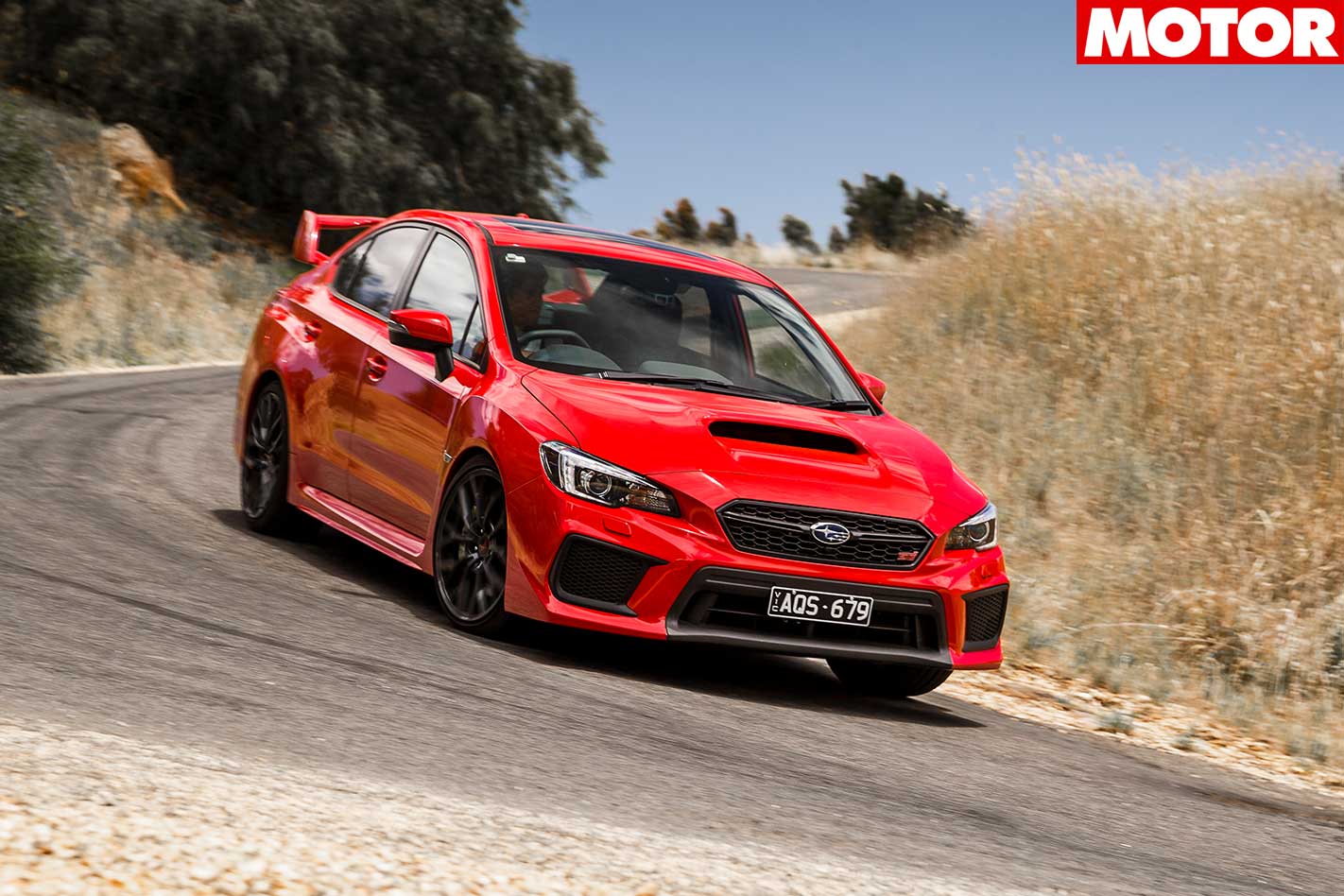
Switching to the Golf R on these roads is like finding the right frequency on the radio. There’s no more harshness, noise, or vibration. We expected more suspension travel and the rear axle jumps a touch in Comfort mode, but switch into Race and the chassis is supple yet adjustable, with expertly tuned variable steering that feels linear. It’s super sharp, well weighted, and the easiest to handle.
Where confidence evaporates in the STI and plateaus in the Golf, it blooms in the Focus RS. Yes, it has stiff damping and spring rates, and the damper’s Sport mode is strictly for a racetrack if you value your teeth, but the RS attacks shoddy roads that are dusty, off-camber, and downhill with the composure of Roger Federer on match point.
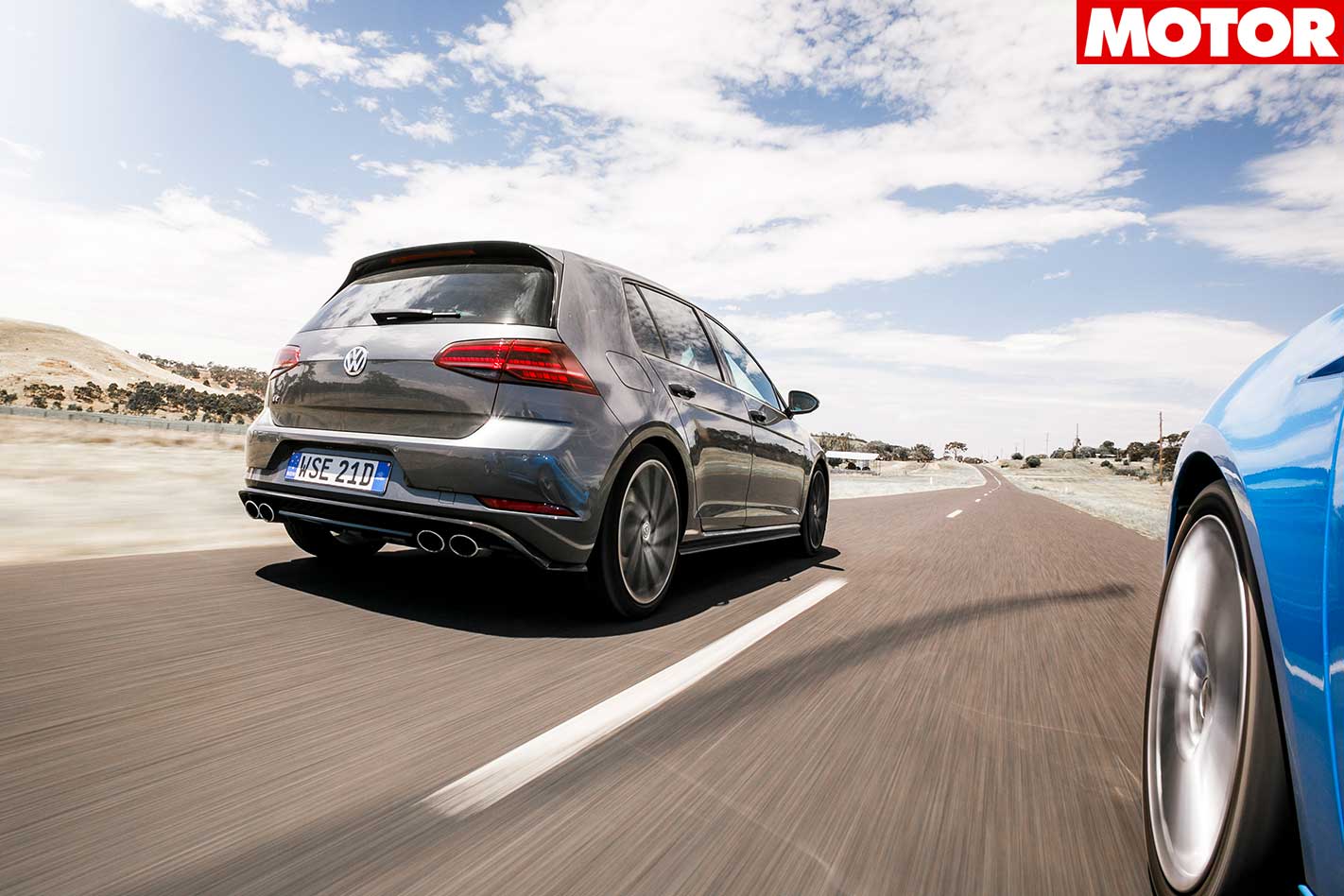
Smoother tarmac lets the Subaru shine. While you can’t adjust the suspension, you can adjust the lock-up of the centre-diff. Leave it open for more agility, lock it up for more traction, but really it’s best left to its own devices in Auto.
The Golf’s all-wheel drive technology pales next to the others, relying on its single-piston brake calipers to shuffle torque from side to side. It doesn’t fire off corners like the WRX or pivot like the RS, however, its Pirellis never protest under power, its circuitboards clearly knowing how to best distribute its 380Nm.
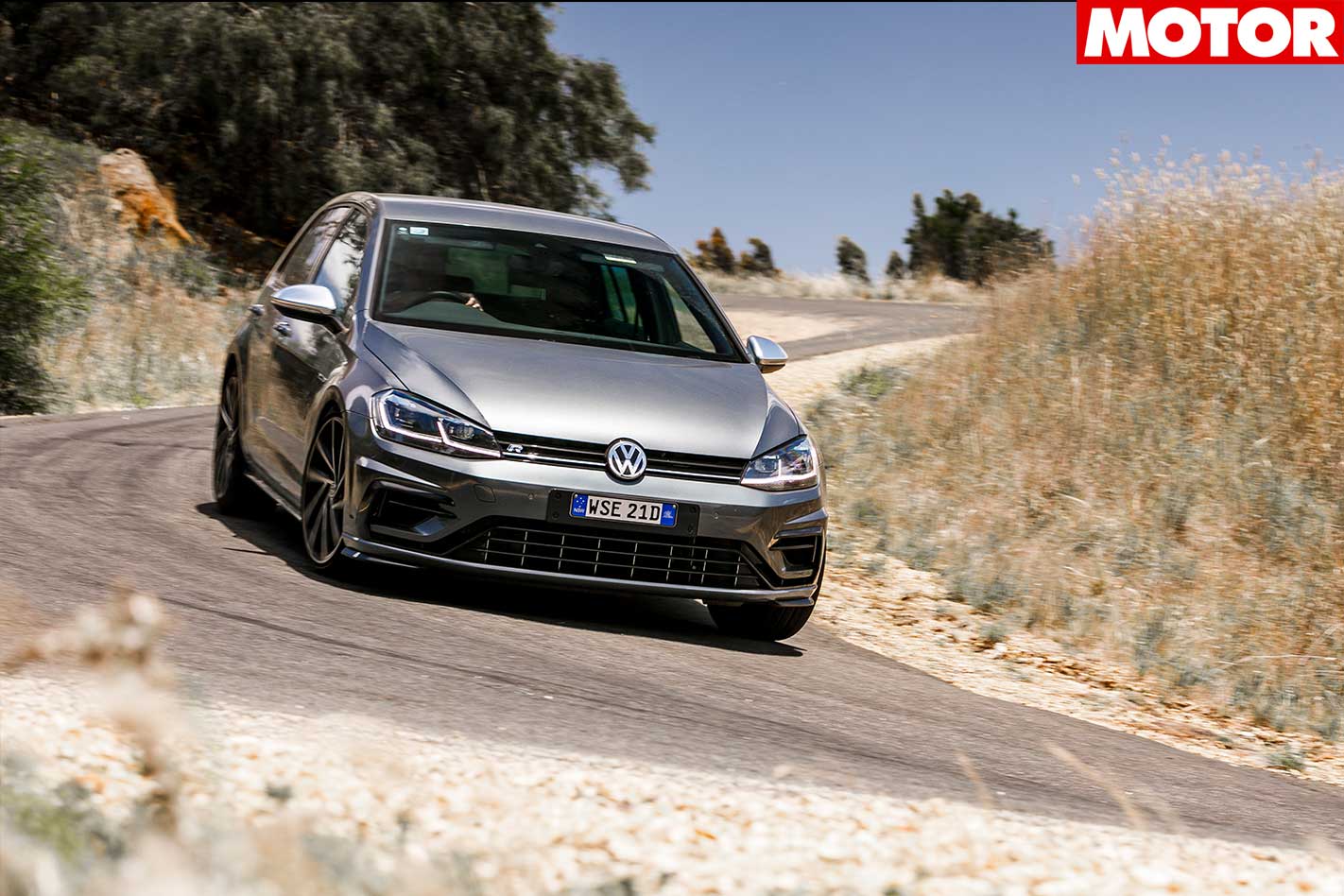
The clutch has a firm spring, and the bite point is brief, but it oozes mechanical charm. The Focus’s is the most involving device, with a slick, long throw and more purposeful knob design. But a non-linear clutch feel spoils ultimate refinement. We’d match the Golf’s clutch feel to the RS’s shift action for the ideal setup.
Subaru’s made a clear effort to push the WRX STI into premium territory with the Spec R. It’s replaced the foggies with swivelling headlights, moved the rear wing to the options list, and installed electrically-adjustable Recaros.
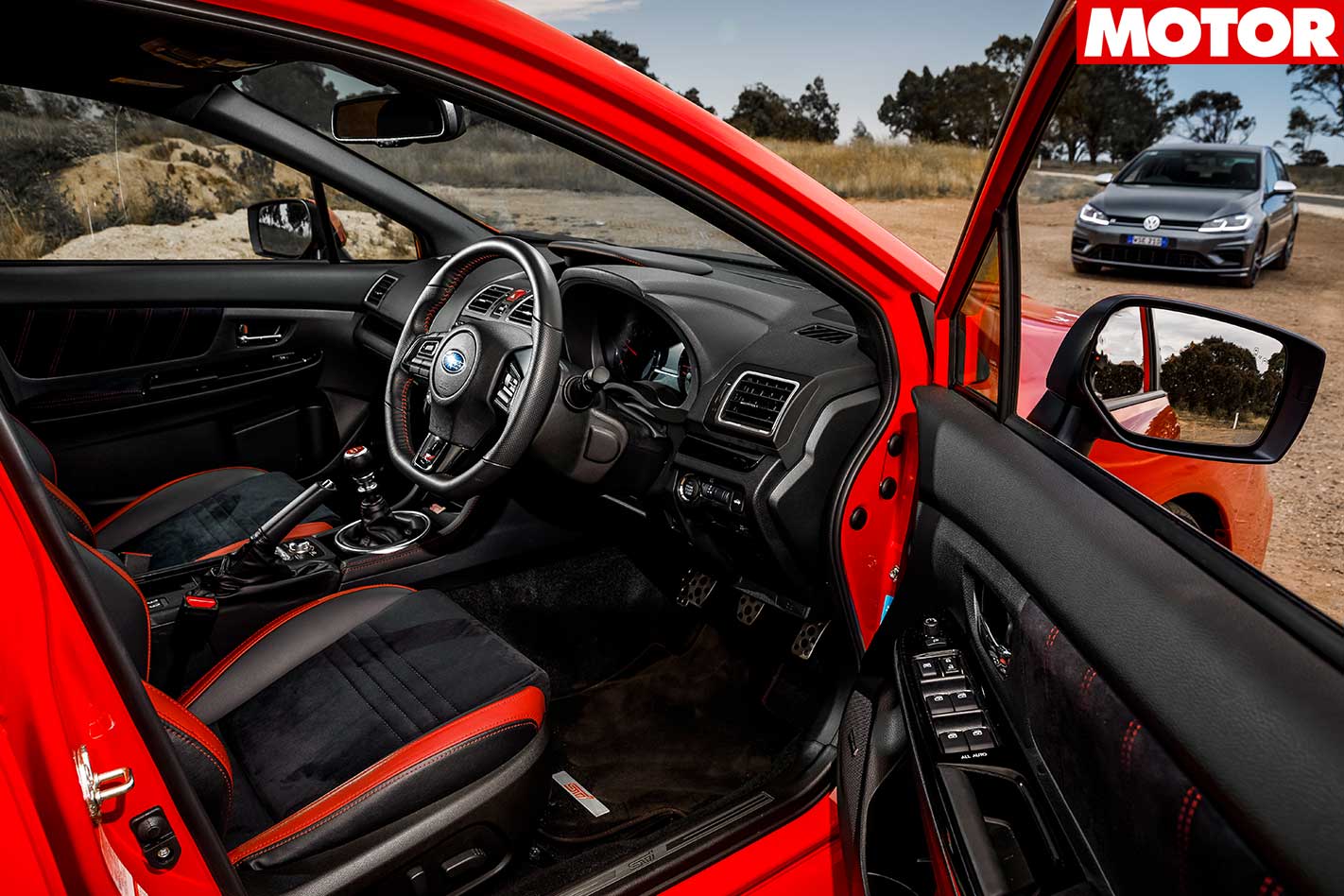
Bolt-ons won’t fix the STI’s problem. Yes, it offers huge performance, the all-wheel drive system deploys furious power with ease and its new brakes can pop your eyes out with their power. But it lacks the compliance and solid steering to play these tricks on any road surface. The engine’s also over a decade old and while some might like its explosive nature, it sorely needs its power curve ironed out.
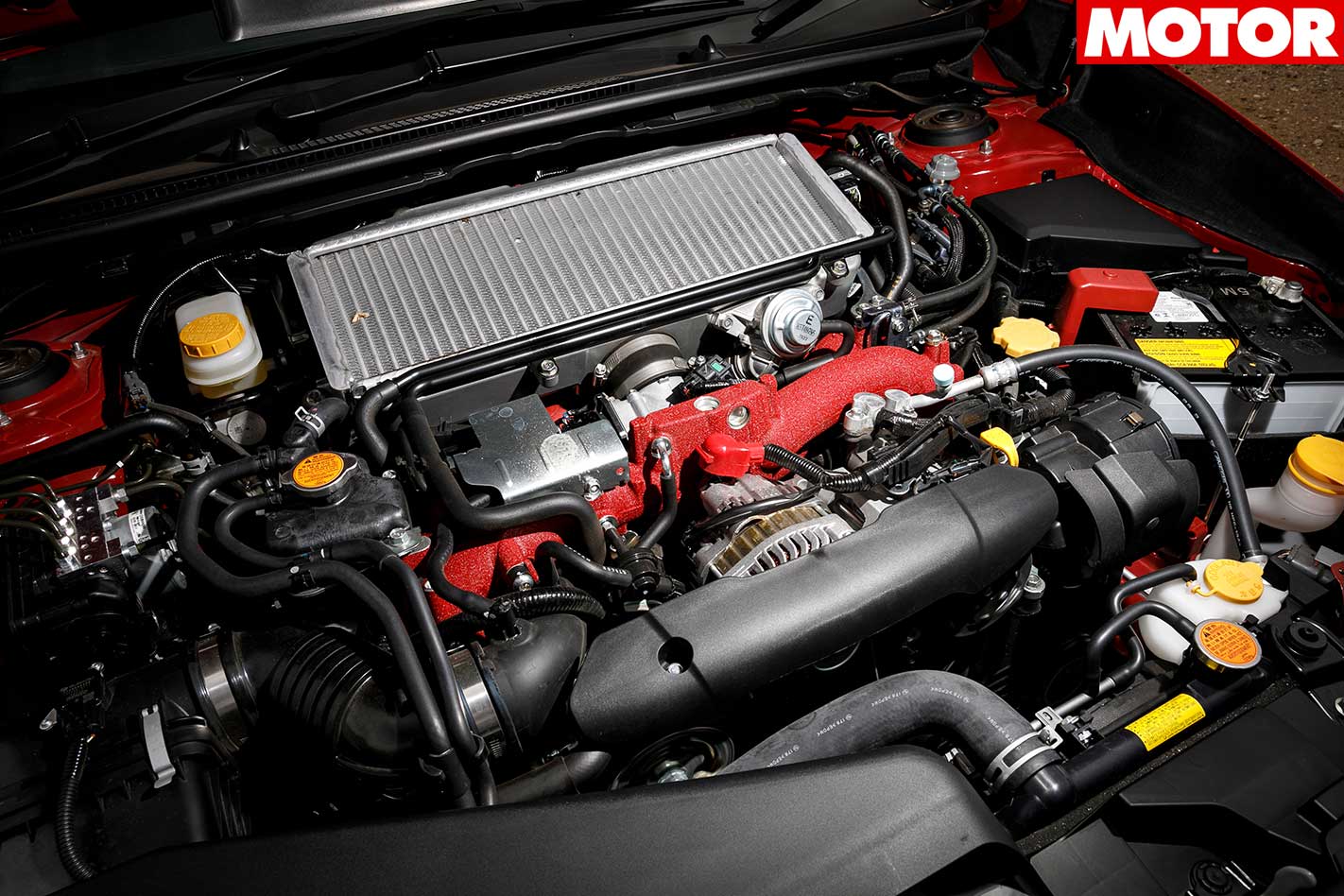
fast on the (spec) sheets with MOTOR Reviews
Best to leave luxury to Volkswagen’s golden child. The Golf R’s updated cabin brims with technology and brilliant build quality. The seats hug better than the STI’s and it steers with clarity and plushness at no expense to its speed.
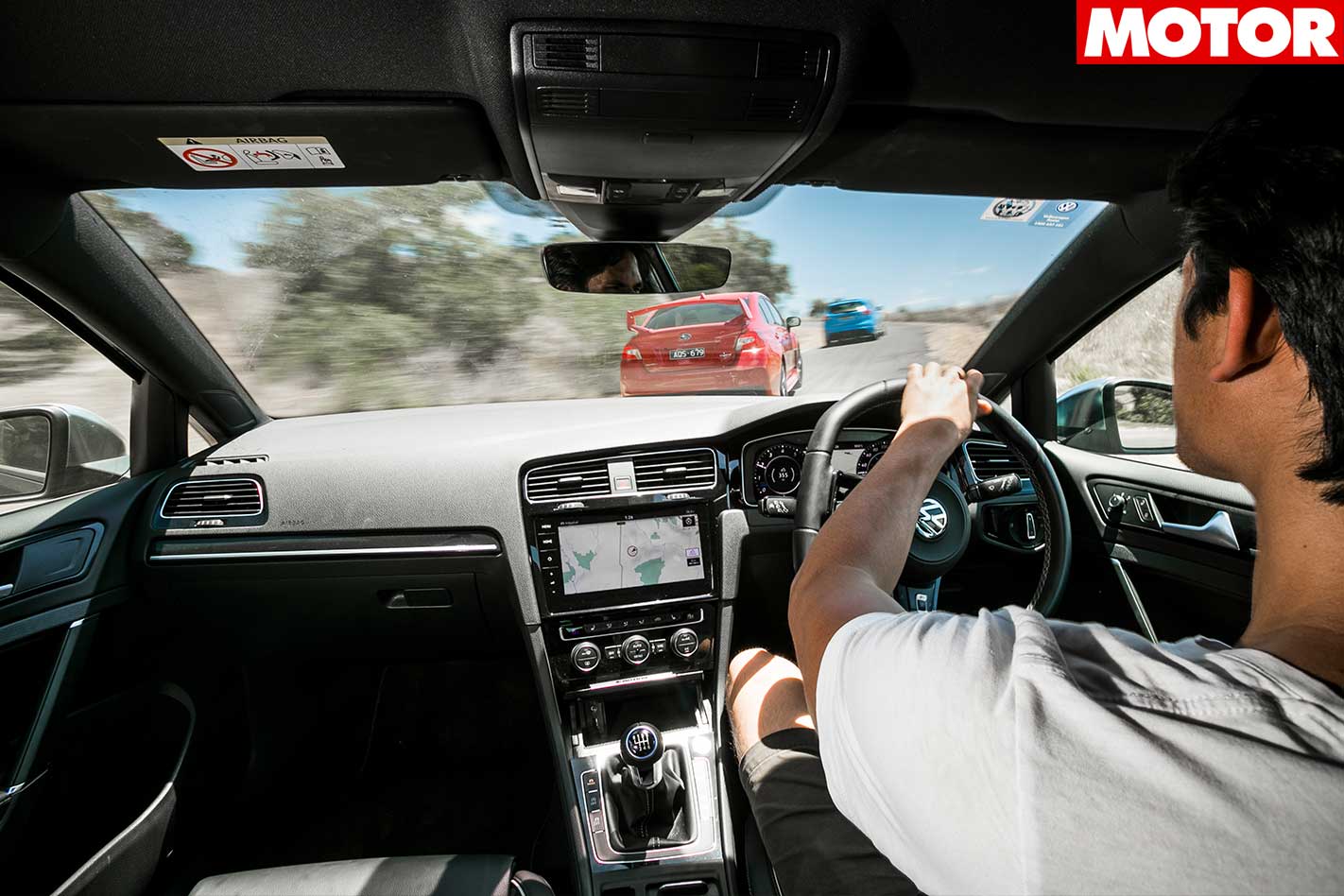
However, while we expected the Golf to school its track-focused competition on ride composure, it failed to master the bumps. Maybe the Mk VIII R coming in a couple years will bring even better damping and an engine that can max out in our conditions. These are, admittedly, among the worst surfaces we’ve ever used, but this rough terrain is what hot hatches and WRX STIs must rule.
And the Ford Focus RS does rule. Its interior might resemble a melted Nokia omelette, and its ride is challenging, but when you slide into its wonderfully grabby seats it’s like dropping the visor on Sebastien Ogier’s helmet.
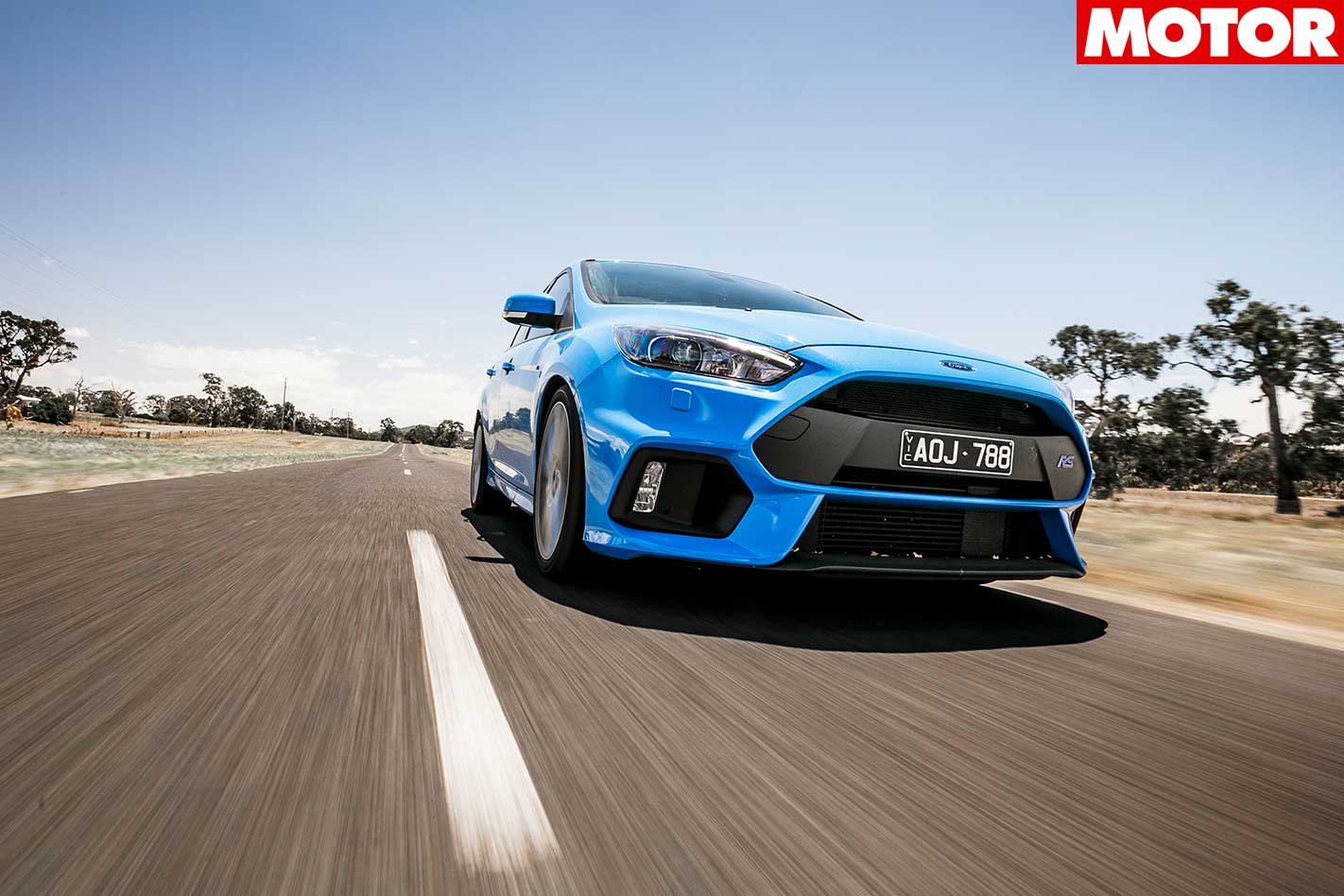
FAST FACTS
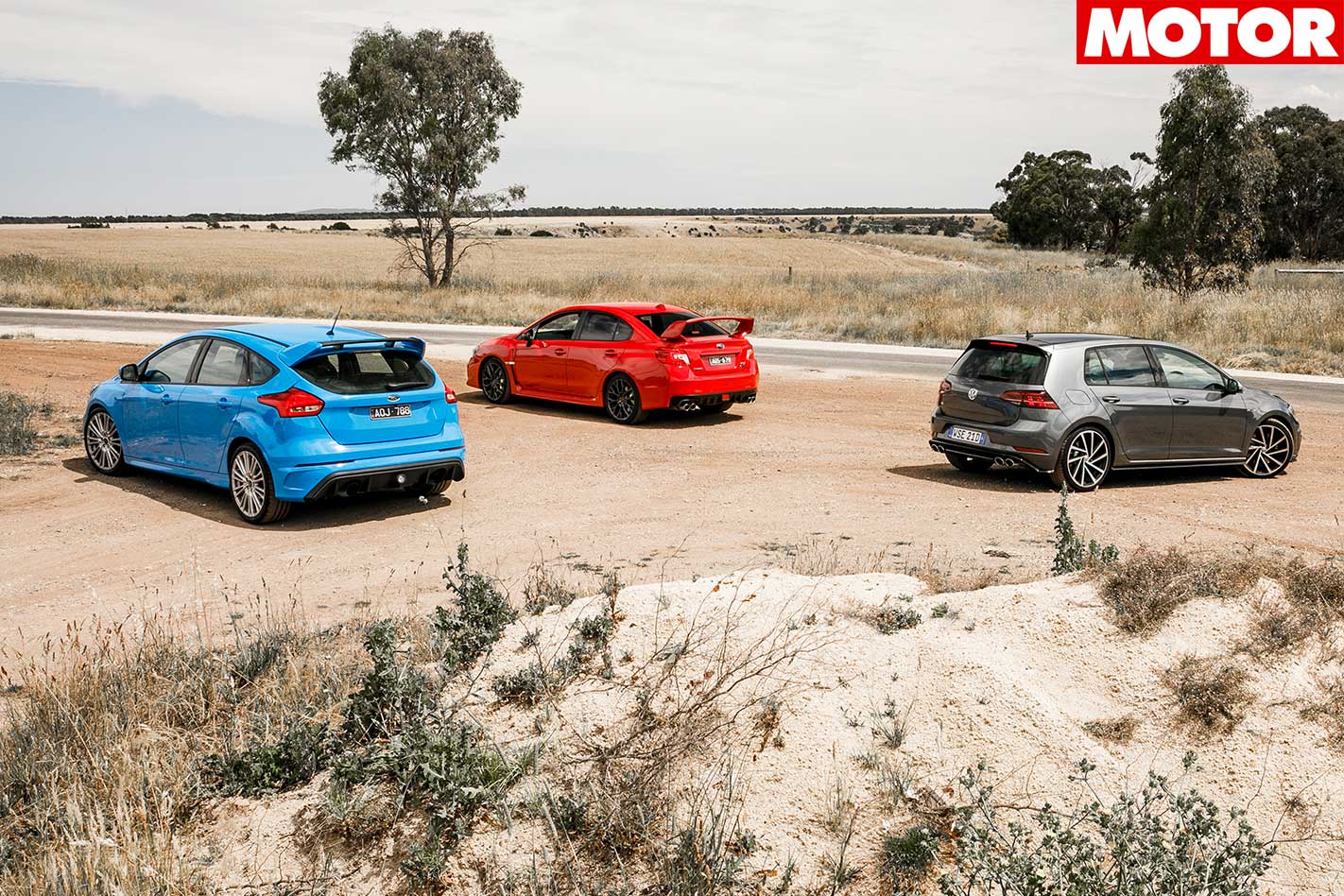
| u00a0 | 2018 Ford Focus RS | 2018u00a0Subaru WRX STI | 2018 Volkswagen Golf R |
| BODY | 5-door, 5-seat hatch | 4-door, 5-seat sedan | 5-door, 5-seat hatch |
| DRIVE | all-wheel | all-wheel | all-wheel |
| ENGINE | 2261cc inline-4cyl, DOHC, 16v, turbo | 2457cc boxer-4cyl, DOHC, 16v, turbo | 1984cc inline-4cyl, DOHC, 16v, turbo |
| BORE/STROKE | 87.6 x 94.0mm | 99.5 x 79.0mm | 82.5 x 92.8mm |
| COMPRESSION | 9.4:1 | 8.2:1 | 9.3:1 |
| POWER | 257kW @ 6000rpm | 221kW @ 6400rpm | 213kW @ 5400-6000rpmu00a0 |
| TORQUE | 440Nm @ 2000-4000rpm (470Nm on overboost) | 407Nm @ 4000rpm | 380Nm @ 1850-5300rpm |
| WEIGHT | 1524kg | 1572kgu00a0 | 1429kg (1450kg auto) |
| POWER/WEIGHT | 168kW/tonne | 141kW/tonne | 149kW/tonne |
| TRANSMISSION | 6-speed manual | 6-speed manual | 6-speed manual |
| SUSPENSION (front) | struts, adaptive dampers, anti-roll bar | struts, coil springs, anti-roll bar | struts, adaptive dampers, anti-roll bar |
| SUSPENSION (rear) | multi-links, adaptive dampers, anti-roll bar | A-arms, dampers, anti-roll bar | multi-links, adaptive dampers, anti-roll bar |
| L/W/H | 4390/1823/1472mm | 4595/1795/1475mm | 4263/1799/1436mm |
| WHEELBASE | 2648mm | 2650mm | 2626mm |
| TRACKS | 1547/1524mm (f/r) | 1540/1530mm (f/r) | 1537/1511mm (f/r) |
| STEERING | electrically-assisted rack-and-pinion | hydraulically-assisted rack-and-pinion | electrically-assisted rack-and-pinion |
| BRAKES (front) | 350mm ventilated discs, 4-piston calipers | 340mm vented/drilled discs, 6-piston calipers | 340mm ventilated discs, single-piston calipers |
| BRAKES (rear) | 302mm solid discs, single-piston calipers | 326mm vented/drilled discs, 2-piston calipers | 310mm ventilated discs, single-piston calipers |
| WHEELS | 19.0 x 8.0-inch (f/r) | 19.0 x 8.5-inch (f/r) | 19.0 x 8.0-inch (f/r) |
| TYRE SIZES | 235/35 ZR19 91Y XL (f/r) | 245/35 R19 89W (f/r) | 235/35 R19 91Y (f/r) |
| TYRE | Michelin Pilot Sport Cup 2 | Yokohama Advan Sport V105 | Pirelli P Zero |
| PRICE | $50,990 | $56,682 | $52,990 |
| PROS | Handling genius; response; involvement | Grip; visibility; brakes | Classy; punchy; sleek looking; sharp steering |
| CONS | Ride; torque steer; crappy interior | Ride; steering kickback; power curve | Forward vision; damping finesse |
| RATING | 4.5 out of 5 stars | 3 out of 5 stars | 4 out of 5 stars |
THE NUMBERS
| u00a0 | Focus RS | WRX STI | Golf R |
| 0-100km/h (sec) | 5.04 | 5.49 | 5.2* |
| 400m | 13.08sec (173.82km/h) | 13.62sec (164.78km/h) | 13.5sec** |
*claimed **estimated


